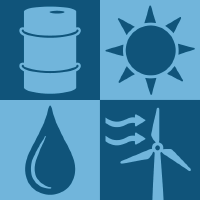Topic Menu
► Topic MenuTopic Editors



Implementation of the Circular Economy in the Raw Materials Sector
Topic Information
Dear Colleagues,
The global economy of raw materials depends both on changes in the structure and intensity of the demand for raw materials as well as their supply possibilities. Activities in the field of economic management of natural resources, and, at the same time, increasing the efficiency of processing processes and technologies for the production of secondary raw materials of waste origin, are gaining more and more importance.
The idea of a circular economy has breathed new energy into the raw materials sector, especially the part based on raw materials of waste origin, i.e., secondary/anthropogenic raw materials. However, despite many examples, the scope of using such materials is still insufficient.
In this edition, we would like to present examples of the most effective activities in line with the strategy of CE. They may concern examples of manufacturing high-quality products and their use in various sectors of the economy, in particular replacing primary raw materials. These can be experiments to expand the life cycle and use of raw materials by improving their properties or substituting potentially hazardous material with negative environmental impacts. Topics related to closing loops in raw material processing and increasing the efficiency of such processes are also important.
Often, the limited possibilities of using and reprocessing secondary raw materials are of a structural nature, the source of which may be legislation, previous practice or lack of trust of the stakeholders. Examples and methods of updating the prevailing framework in this area will also find a place in this topic.
Dr. Radoslaw Pomykala
Prof. Dr. Barbara Tora
Dr. Katerina Adam
Topic Editors
Keywords
- circular economy
- secondary raw materials
- anthropogenic deposits
- mineral processing
- critical minerals
- recycling
- closing the loop
- life cycle of raw materials
Participating Journals
| Journal Name | Impact Factor | CiteScore | Launched Year | First Decision (median) | APC |
|---|---|---|---|---|---|

Minerals
|
2.5 | 3.9 | 2011 | 18.7 Days | CHF 2400 |

Resources
|
3.3 | 7.7 | 2012 | 23.8 Days | CHF 1600 |

MDPI Topics is cooperating with Preprints.org and has built a direct connection between MDPI journals and Preprints.org. Authors are encouraged to enjoy the benefits by posting a preprint at Preprints.org prior to publication:
- Immediately share your ideas ahead of publication and establish your research priority;
- Protect your idea from being stolen with this time-stamped preprint article;
- Enhance the exposure and impact of your research;
- Receive feedback from your peers in advance;
- Have it indexed in Web of Science (Preprint Citation Index), Google Scholar, Crossref, SHARE, PrePubMed, Scilit and Europe PMC.

